Creative Parents: Marisabel Gonzalez (contemporary artist and mother of three)
“You don’t need to lose your identity during this journey; rather, you should let life unfold naturally.”
Before I start this very interesting interview, I just wanted to do a quick housekeeping and say hello to all the new subscribers since I launched my Substack a little over a month ago. Thursday evening has become the natural time to release these newsletters, mostly because my big girl is in daycare on Wednesday and Thursday. How’s the timing working for you? The lovely thing about Q&As is you can dip in and out, picking up where you left off. Also, do you have any creatives you’d like to suggest? Or questions I should ask? Pop them below in the comments section.
This week, my interviewee is the wonderful abstract artist Marisabel Gonzalez. Born in Venezuela, she is now based on Sydney’s Northern Beaches with her beautiful family of three big kids. I just loved reading the wisdom of her 27 years of parenting! There were so many lines throughout that I highlighted as things to keep in mind for my parenting journey. I loved this mantra, which may help me stay grounded through the relentless toddler years! “Our objectives may shift, and priorities may change, but it's essential to cherish the beauty of each phase, for projects will always exist, yet our children will never be the same age again.”
I’ve written about Marisabel’s practice a couple of times, including most recently, her exhibition essay, De Rerum Natura — On the Matter of Things at Gallery Lane Cove, which continues until 24 June. This was an interesting concept to wrap my head around! Based on a first-century poem BC by Lucretius by the same name, it explores the nature of the mind and soul and the workings of the universe, but in even in the unknown, there is a still a process. Even if we don’t have the science and words to explain it yet.
Isn’t that just the epitome of art? Especially abstract art? As a writer of art, writing often takes me to these places of finding a resolution. Mostly, I arrive at the person, the ideas, and also the colours, lines, marks, and textures. Distilling these complex arrangements and compositions into a piece of writing that allows the viewer to have an even deeper engagement. Ironically (and to my husband’s dismay), I’m not really a recipe-follower, instructions-reading, person. So I can relate that some may not see the point in reading about art (though of course, I love reading about art at a gallery!!). But if you can give art writing some time, it’s so lovely to have that deeper engagement with the art. And hot tip, Google can be your friend for those particularly convoluted turns of phrases art writers like to use ;)
For example, for Marisabel, she is also a sonographer, decoding the human body with symbols. Understanding this depth in her artworks adds another dimension. A way to be witness to the process, though, to recognise it may not ever be something you understand.
Here is the Q&A of Marisabel Gonzalez, contemporary artist and mother of three:
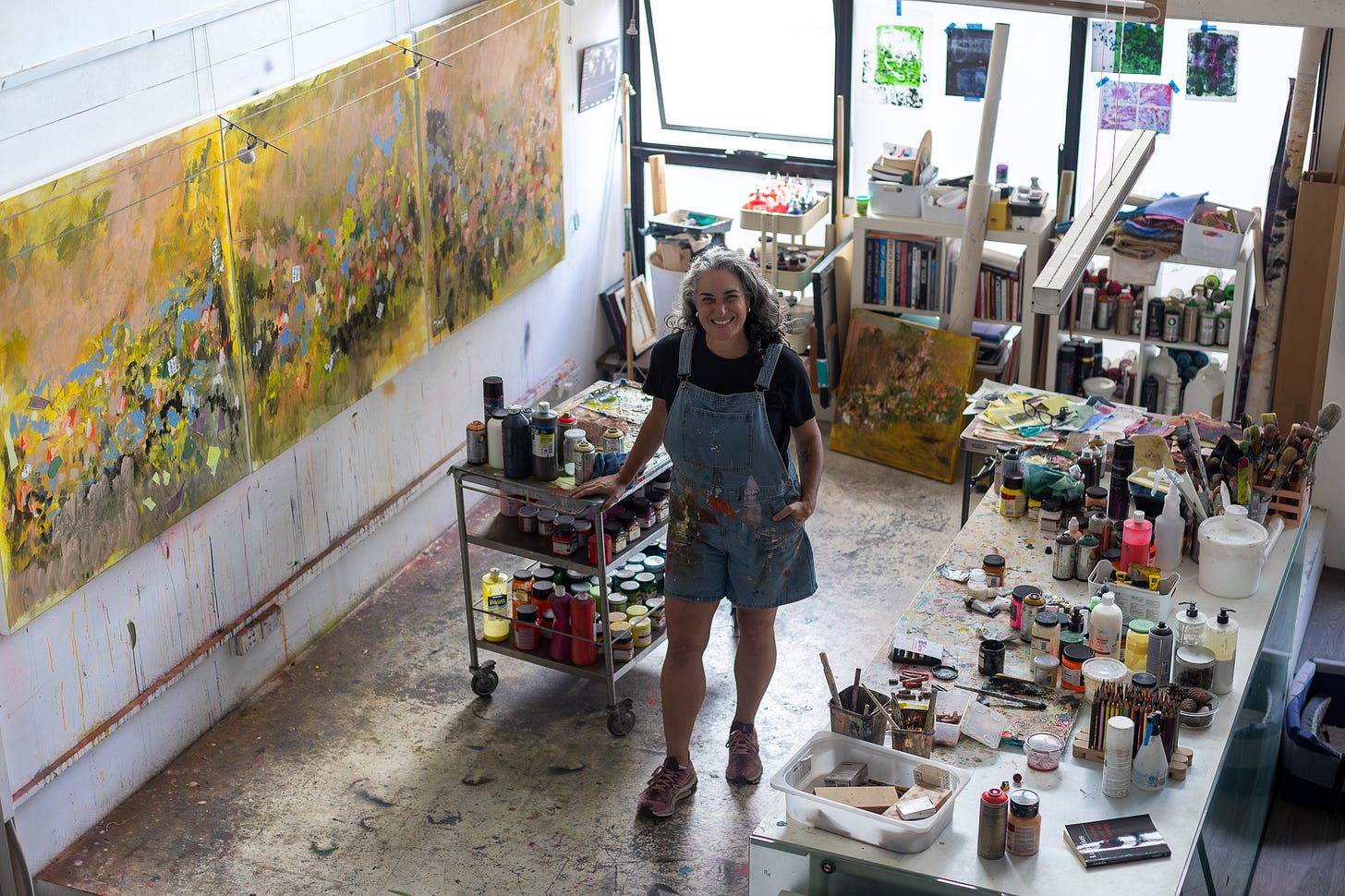
Can you tell us about your art & design practice — what do you create, with what, and why?
As a contemporary abstract painter with a background in medicine and sonography, my artwork delves into the emotional and symbolic aspects of human nature, using colour as my main expressive tool. I craft large-scale paintings that frequently feature dynamic mark-making, integrated text, and textured layers. The visual language I’ve developed draws significant inspiration from ultrasound imaging; the interplay of textures and shadows resonates with natural forms, prompting profound introspection and connection. Through my practice, I aim to explore and express the beauty, fragility, and intricacy of the human experience.
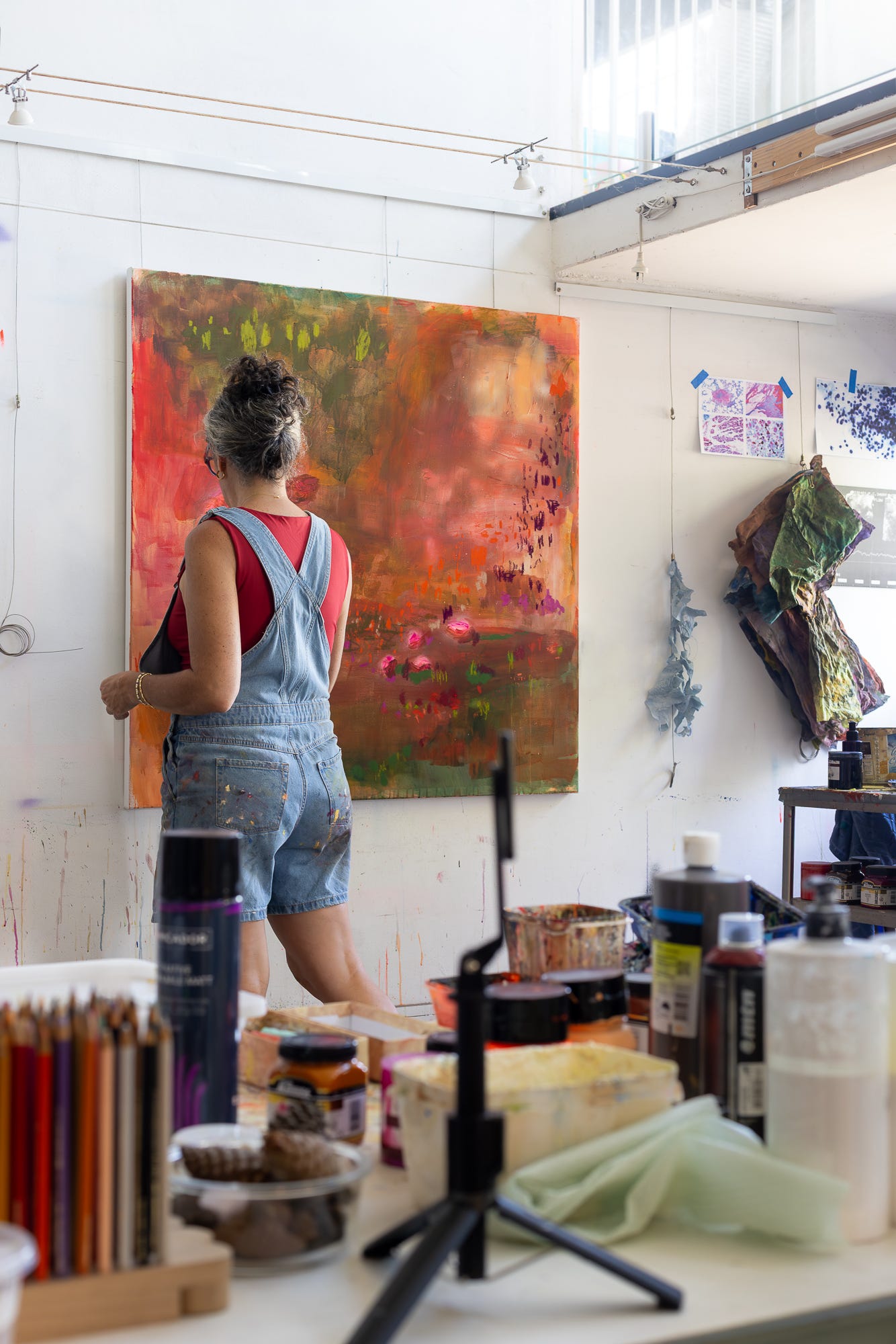
How did you get here?
It has been a winding path. I was born in Venezuela, trained in medicine, and later specialised in ultrasound imaging. My work in healthcare gave me an intimate understanding of the body and its silent stories — and eventually, those invisible narratives needed a visual outlet. After moving to Australia, I allowed myself to fully pursue my long-standing passion for art. It began as a way to reconnect with myself during my immigration process and evolved into a professional practice. Today, my dual background — medicine and art — constantly informs my creative voice.
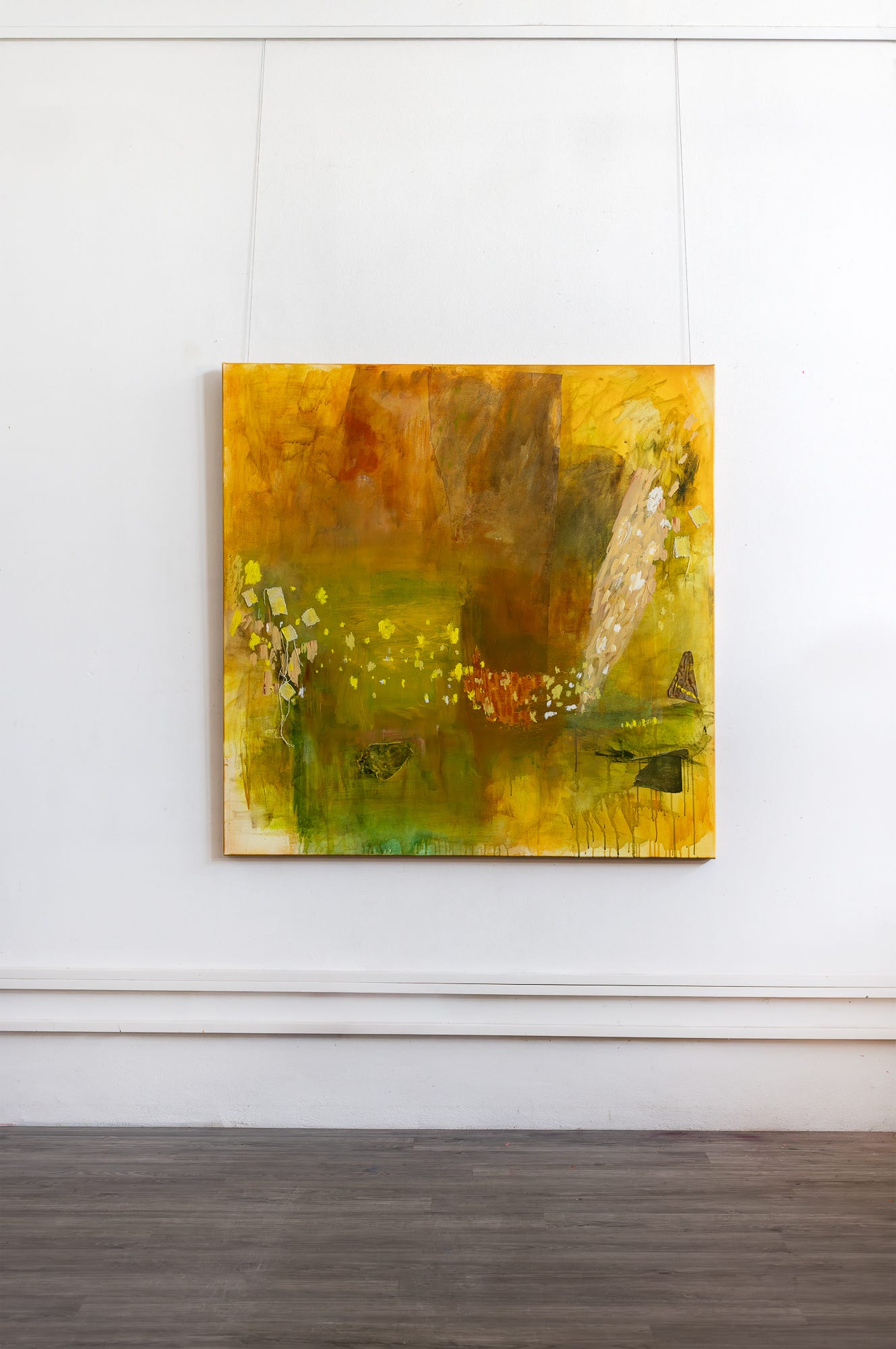
What inspires your work? Any particular design periods or philosophies?
Nature is an endless source of inspiration, especially when viewed through the lens of science — patterns, rhythms, and fragility all play a role. Philosophically, I’m drawn to the ancient idea that art and science are not separate, but rather interwoven expressions of our desire to understand existence. My recent body of work was inspired by De Rerum Natura (On the Nature of Things), a Roman text that poetically explains the world through atomist philosophy. That fusion of the poetic and the scientific is where I feel most at home.
When did you know you wanted to become a creative? Was there an influential figure growing up?
I believe I’ve always had that impulse, but I didn’t allow myself to fully pursue it until later. My grandmother lived with us throughout my life. She was an opera singer and composer, which ensured I grew up surrounded by creativity; however, the pragmatism of pursuing a “stable” career meant I decided to complete a degree in medicine. It was during my immigration to Australia that I began to see how creativity and medical observation could co-exist.
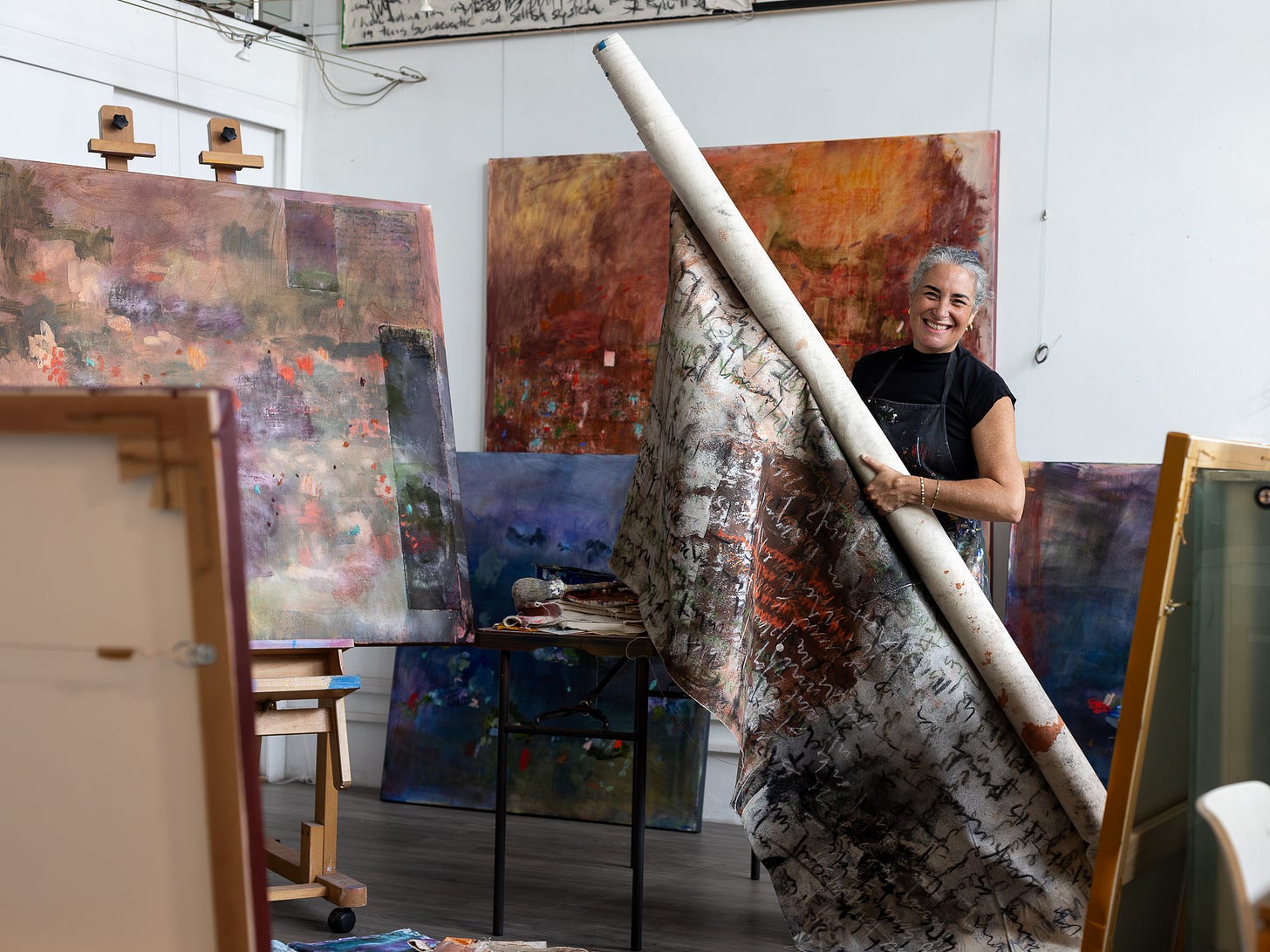
What have been some of the highlights of your career, and what do you have coming up? Do you have a favourite project?
A few highlights include being selected for the Lucca Biennale Cartasia in Italy and holding an international solo exhibition in Düsseldorf, Germany. Other notable achievements involve being a finalist for several prestigious awards, such as the Paddington Art Prize and the Northern Beaches Environmental Art Prize, and winning the Collabor8 Women Art Prize in 2023. One project that remains very close to my heart is writing my Manifesto for Palimpsest solo exhibition (2023), a work that explores the concept of layering — memory, time, and identity. Most recently, I opened my solo exhibition, De Rerum Natura, on May 28th, culminating years of research blending medicine, nature, and classical thought.

Who is in your family and what are their ages?
We are a family of five humans and two dogs. I married my high school sweetheart, and we have been together since I was 14. Our eldest son is 27 years old and is about to start his own family. Our middle boy (25) and not-so-little girl (17) share the studio with us. Dada (11 years) and Boni (5 years) are our two energetic Lagotto dogs. They provide constant inspiration and grounding energy in my life.
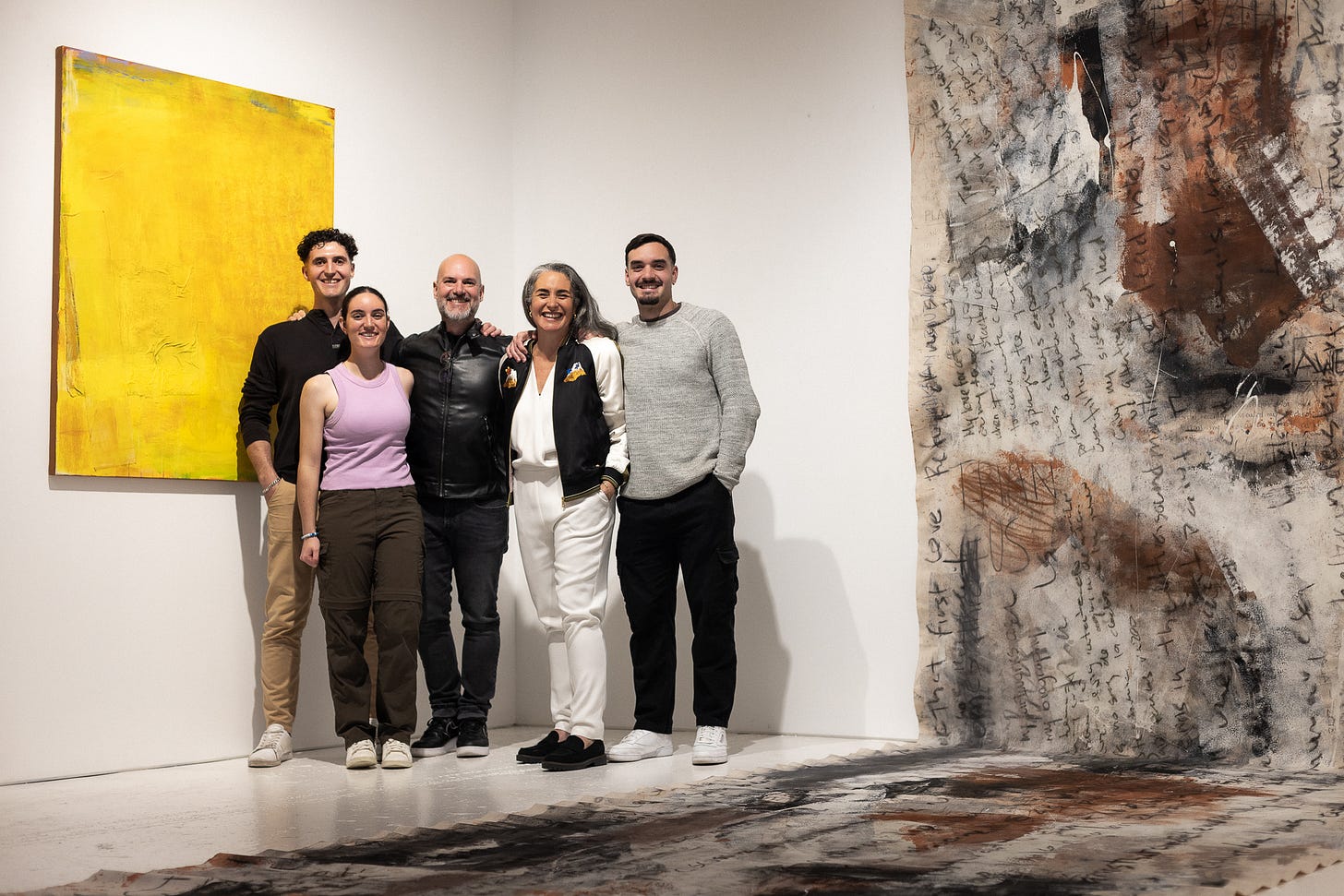
Where are you based, and why did you choose this area? It would also be great to reflect on your own home + art / design choices with your family in mind.
We’re based in Sydney’s Northern Beaches, which offers a lot of natural beauty. The calm proximity to the ocean and bushland feels vital to me. We live in a home-studio where art and family areas are merged. My children are familiar with my studio wins and struggles, and my art practice has become part of each of us. I hope this exposure has provided my kids with a sense of wonder and freedom that they can apply to their own ways of seeing and navigating life.
The art I have in my home has mostly come from swaps with other artists I admire and love; these artists have become dear friends and inspire me every day. You can find works with fun and humour from Joi Murugavell, vibrant colour compositions from Maria Jose Benvenuto, abstract expressionism from Charles Herbert, minimalistic Australian Aboriginal pieces by Tiarna Herczeg, insightful photographs by Gabby Villalba, urban graphics by Miguel Gonzalez, Andean-inspired textiles by Vanessa Valero, and geometric abstraction by Bernardo Wallis. There are so many others I would love to add to this list!
Has becoming a parent changed your practice?
Absolutely. Becoming a parent has made me more honest and focused. I no longer have the luxury of endless time, so I’ve learned to fiercely protect and value my studio hours. It has also brought emotional depth to my work — there’s something about witnessing a child’s unfiltered experience of the world that continually reshapes how I see and create. My work has become not just a personal pursuit, but something I hope my children can one day understand as part of our shared story.
What does your day-to-day look like, and how has this changed from previously?
I structure my week with purpose: I dedicate two days to clinical practice and the remaining time to studio work, including handling the business aspects of art. This routine helps me be present as a parent while treating my practice with the professionalism it warrants. Although the days of school runs and after-school activities are nearing their end, I must still ensure that my family time and personal moments are respected by both my clinical and artistic endeavours. It’s not always straightforward, but I’ve learned to adapt.
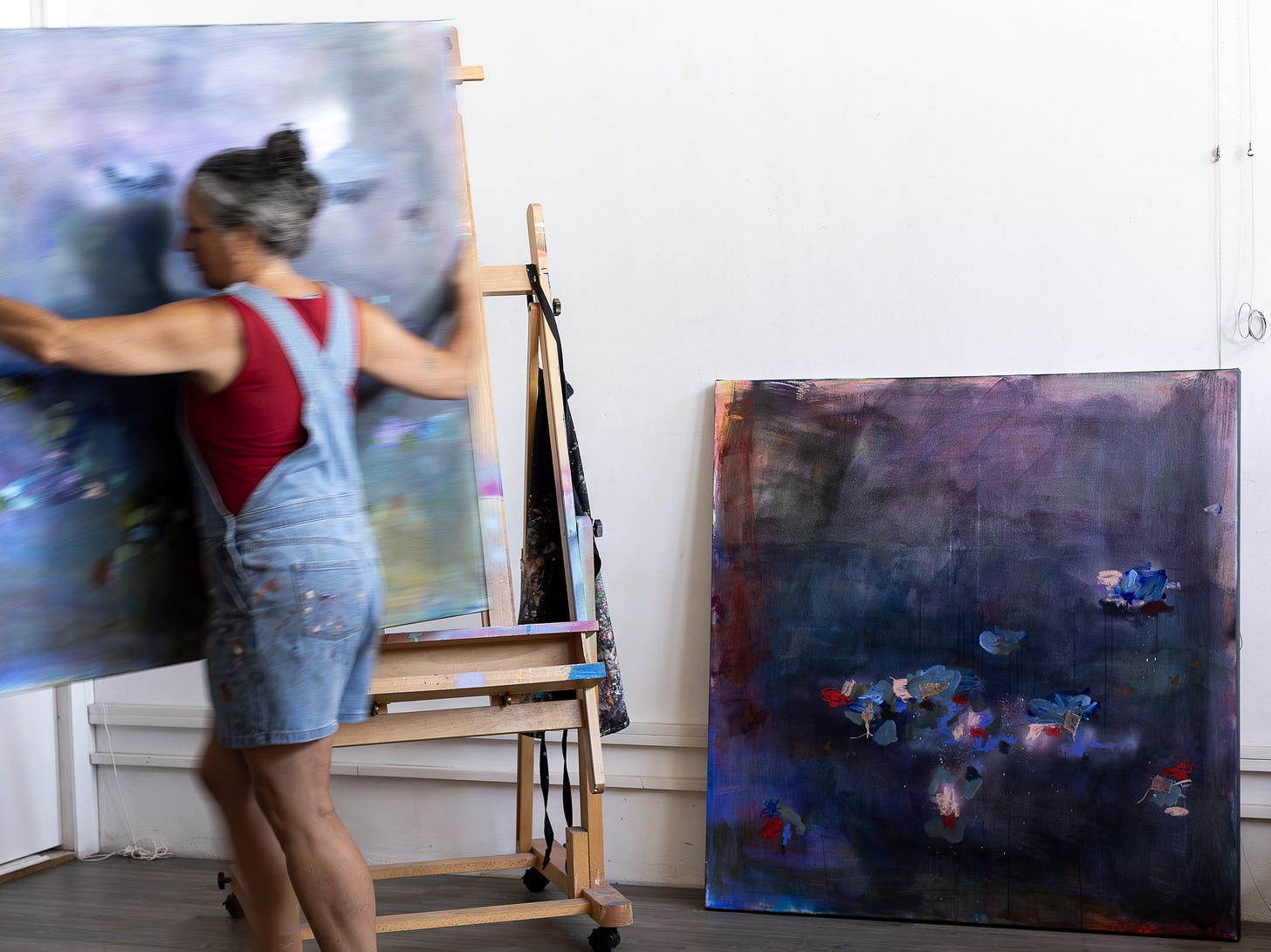
Do you have any advice for creative parents?
Being a parent means enabling another individual to grow and evolve – to ‘become’. You don’t need to lose your identity during this journey; rather, you should let life unfold naturally. Our objectives may shift, and priorities may change, but it's essential to cherish the beauty of each phase, for projects will always exist, yet our children will never be the same age again.
Encourage your creative pursuits and parenting to support each other instead of competing. While time constraints are unavoidable, the profound experience of parenting is also significant. Don’t wait for ideal circumstances; make use of the little pockets of time you have. Allow your children to observe your artistic endeavours. They absorb much more than you realise — not just the art itself, but also the dedication to pursuing your passions.

What are your thoughts on the approach of the industry to parents? Have you found support or a lack of it?
There is much work ahead. The art and design industry frequently idealises the concept of the “full-time” artist, portraying them as individuals who can participate in residencies, travel, and evening events. This often conflicts with the responsibilities of parenting. Nevertheless, I have witnessed a shift in communities. Initiatives aimed at supporting women and mothers in the arts have positively impacted my experience. It is essential to keep advocating for flexible and inclusive frameworks that value both creativity and caregiving.
Do you have a mantra or quote that keeps you going?
I have two phrases that I constantly return to. The first one I owe to a very good friend who, while undergoing cancer treatment, used to tell me, ‘A skilled mariner is made on rough waters.’ This phrase I always carry with me. The other one is a reminder to be inspirational for others, to focus on what I can give rather than on what I can receive. It says, ‘Be like high tide and lift every vessel.’
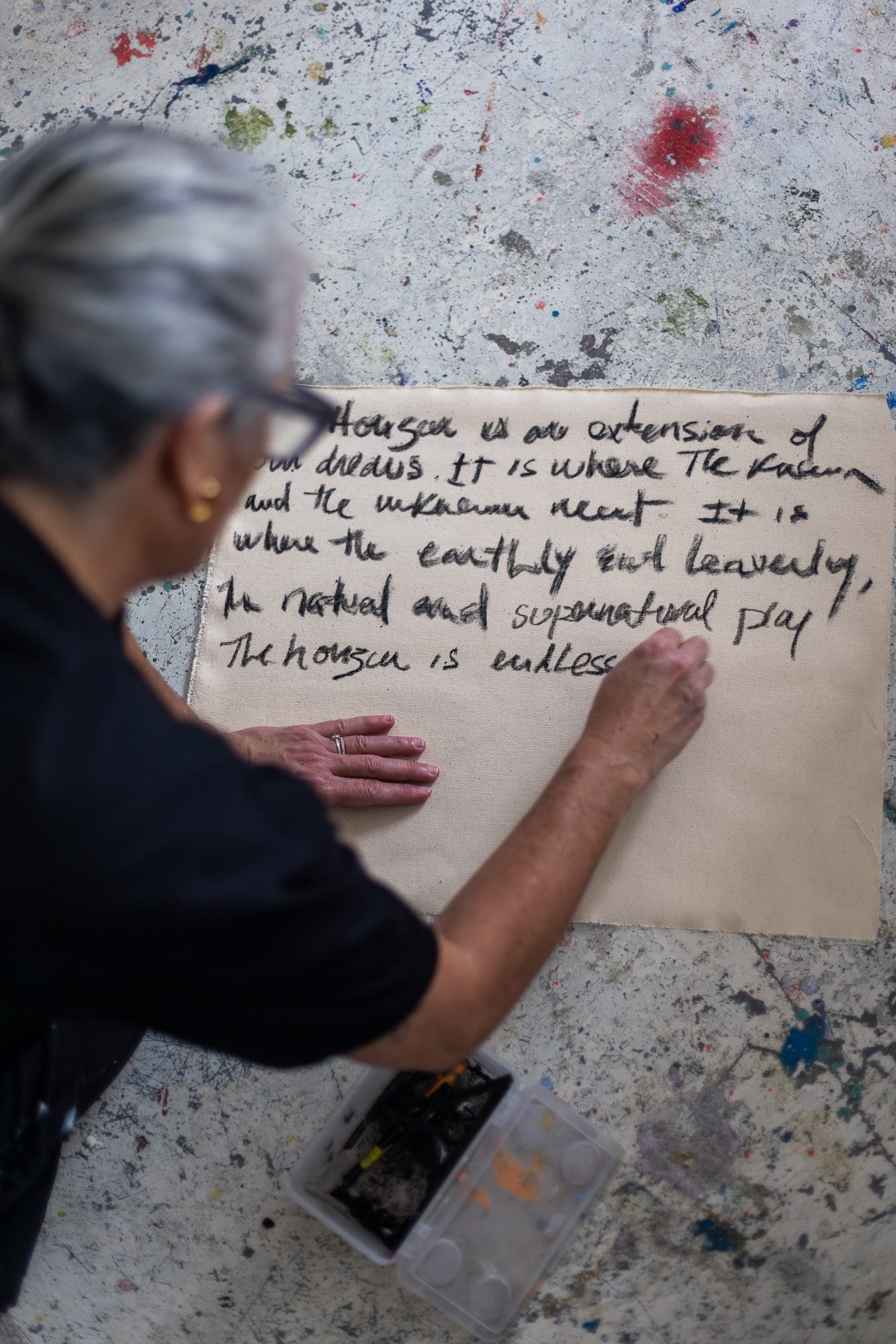
Website: marisabelgonzalez.com
Instagram: @marisabelarte
Substack:





Wow Emma thank you for writing about my practice with such delicacy and care. I loved going over your insights as this is something we rarely get to do as artists. Thank you for bringing my practice to your audience. ❤️❤️❤️